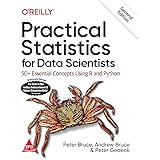Convert multiple columns into a single column-tidyr Part4
Convert multiple columns into a single column, To combine numerous data frame columns into one column, use the union() function from the tidyr package.
Convert multiple columns into a single column
The basic syntax used by this function is as follows.
unite(data, col, into, sep)
where:
data: Name of the data frame
col: Name of the new united column
… : names for the columns to be combined in a vector
sep: How to create a new united column and combine the data
The practical application of this function is demonstrated in the examples that follow.
5 Free Books to Learn Statistics For Data Science – Data Science Tutorials
Example 1: Unite Two Columns into One Column
Let’s say we have the R data frame shown below:
Let’s create a data frame
df <- data.frame(player=c('P1', 'P1', 'P2', 'P2', 'P3', 'P3'),
year=c(1, 2, 1, 2, 1, 2),
points=c(202, 290, 180, 101, 312, 219),
assists=c(92, 63, 76, 88, 65, 52))Now we can view the data frame
df
player year points assists 1 P1 1 202 92 2 P1 2 290 63 3 P2 1 180 76 4 P2 2 101 88 5 P3 1 312 65 6 P3 2 219 52
The “points” and “assists” columns can be combined into a single column using the union() function.
library(tidyr)
combine the columns for points and assists into one column.
Best Books on Data Science with Python – Data Science Tutorials
unite(df, col='points-assists', c('points', 'assists'), sep='-')player year points-assists 1 P1 1 202-92 2 P1 2 290-63 3 P2 1 180-76 4 P2 2 101-88 5 P3 1 312-65 6 P3 2 219-52
Example 2: Unite More Than Two Columns
Let’s say we have the R data frame shown below:
Let’s create a data frame
df2 <- data.frame(player=c('P1', 'P1', 'P2', 'P2', 'P3', 'P3'),
year=c(1, 2, 1, 2, 1, 2),
points=c(228, 229, 198, 151, 412, 325),
assists=c(82, 93, 66, 45, 89, 95),
blocks=c(28, 36, 32, 82, 18, 12))Let’s view the data frame
df2
player year points assists blocks 1 P1 1 228 82 28 2 P1 2 229 93 36 3 P2 1 198 66 32 4 P2 2 151 45 82 5 P3 1 412 89 18 6 P3 2 325 95 12
The points, assists, and blocks columns can be combined into a single column using the union() function.
library(tidyr)
combine the columns for scoring, assists, and blocks into one
unite(df2, col='stats', c('points', 'assists', 'blocks'), sep='/')player year stats 1 P1 1 228/82/28 2 P1 2 229/93/36 3 P2 1 198/66/32 4 P2 2 151/45/82 5 P3 1 412/89/18 6 P3 2 325/95/12
Best Books to learn Tensorflow – Data Science Tutorials
Have you liked this article? If you could email it to a friend or share it on Facebook, Twitter, or Linked In, I would be eternally grateful.
Please use the like buttons below to show your support. Please remember to share and comment below.






